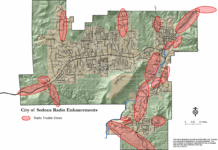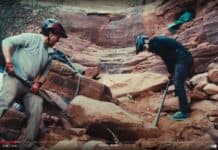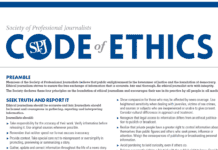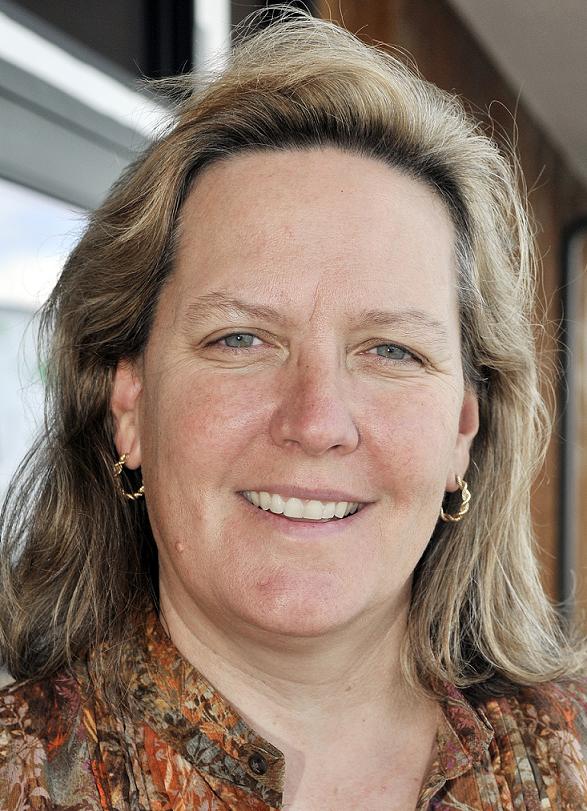In the midst of a violent uprising and Chinese government crackdown in 1959, tens of thousands of Tibetans fled their homeland for temporary camps in India.
More than 50 years later, most of those temporary refugee camps have become near-permanent homes. Tibetan refugees in the camps often lack medical care, but a Sedona-based charity aims to solve that problem.
Humanitarian Efforts Reaching Out |
|
Humanitarian Efforts Reaching Out is a 501(c)(3) nonprofit organization founded by Dr. Julia A. Williams, a Sedona doctor who works at Flagstaff Medical Center. The group is planning a mission to Mainpat, Chhattisgarh state, India, to bring medical and dental care to some 14,000 Tibetan refugees who have lived in that part of rural India since fleeing Tibet following the 1959 Tibetan Uprising. Some 80,000 Tibetans are believed to have been killed with tens of thousands more fleeing Tibet into India, Nepal, Bhutan and Bangladesh as communist Chinese troops violently quelled the uprising. Many Tibetans have lived in what were intended to be temporary refugee camps for the last 52 years. For more information about HERO, visit HEROefforts.org, call (928) 300-0704 or email to JoinUs@HeroEfforts.org. |
Humanitarian Efforts Reaching Out was founded by Dr. Julia A. Williams, a Sedona physician who works at Flagstaff Medical Center.
Last year, Williams led a HERO mission to Mainpat Tibetan Settlement in Chhattisgarh state — one of the most remote Tibetan refugee camps in India. The group is planning for its second trip to Mainpat from Saturday to Friday, Dec. 17 to 30.
Home to 14,000 Tibetan refugees, the settlement is spread across seven separate camps. During the group’s stay, members will visit the separate camps and give medical and dental care to both Tibetan refugees and the 5,000 native Indians in the area.
People line up for hours and come from miles away to be seen by physicians. No one is turned away, Williams said.
“The people in this part of India are some of the poorest I’ve ever seen and I’ve traveled pretty extensively,” she said. “You see a lot of illness and a lot of contagious diseases.”
Many of the young children wear nothing but a single cloth, said Katie Holborow, a Sedona resident who was on last year’s mission. She said mission members found themselves giving away some of their extra clothes to the cold children.
Not everyone can be saved, but mission members do what they can, Williams said.
The camps are administered by the Central Tibetan Administration, aka the Tibetan government in exile, on land governed by India.
The mission’s 34 members come from the Verde Valley and Sedona to Flagstaff, Williams said, and range in age from 14 to 74. Most will sleep on the floor of the local Buddhist temple or in tents.
Williams leads the medical component of 11 people, including Flagstaff emergency room doctors Sarah Hsia and Kurt Mueller, nurses and Northern Arizona University medical students.
This year’s program also adds students from several programs at NAU in an effort to improve the Tibetans’ quality of life instead of just their health.
Engineering students will install two wind towers to produce power for some of the camps. Another project will be the installation of parabolic solar ovens. One 4-foot-by-9-foot oven can take just 50 minutes to cook rice and vegetables for 25 people. There are few trees and little burnable material around the camps.
At a cost of about $900 each, the team hopes to build seven ovens by the time it leaves.
Five dental hygienists will be led by Flagstaff dentist Thomas Grabarek. The dental team will apply sealants, treat dental diseases and instruct patients about basic dental care.
“The refugees have never had a dentist come to this camp ever,” Williams said.
Leslie Schulz, Ph.D., executive dean of NAU’s College of Health and Human Services, will bring students from the international education program.
The group has received 3,000 pairs of eyeglasses and sunglasses collected by Sedona, Flagstaff and Phoenix Lions Clubs and donated by Sedona optometrist Dr. Serge Wright.
The sunglasses are used to prevent or slow down the growth of pterygium, which the Tibetans call “black eye,” Williams said. Caused by low humidity, dust and constant exposure to bright sunlight, pterygium is a benign growth that begins to form over the eye and can cause cataract-like blindness. Tibetans and Indians develop the disease from spending hours in the dry, dusty fields around the camps where they hand-cut buckwheat.
In the West, pterygium can be fixed through surgery, but in rural India, eye lubrication and sunglasses for protection is all that is available, she said.
Last year, a donor supplied 80,000 children’s multivitamins which the mission team brought with them. This year, AmeriCares donated 650,000 multivitamins for pregnant and lactating women.
Due to the high cost of shipping to India, the mission asks members to reserve 25 percent of their 100 pounds of luggage space for their own clothing, camping gear and sleeping bags, and the other 75 percent for items like the eyeglasses and vitamins.
The trip is funded by the participants, costing about $2,500 per person. Mission members pay for flights, travel, food, interpreters and even the wood they burn for fuel.
Travel alone is two-and-half days. After landing in Delhi, the group takes a short flight to Raipur, then a 17-hour bus trip to the camps.
Despite the cold, the mission plans on a December trip because of the low mosquito count, reducing the risk for mission members to contract malaria.
Also traveling with the mission is a group from Senestech, a Flagstaff biotech firm, Williams said. The company has developed a rat bait that prematurely pushes females into menopause, reducing the breeding stock.
Previous attempts at killing rats involved spreading pesticides over rice paddies, but rice harvesters stand for hours in the water and the pesticides gets into the rice as well, Williams said.
The bait is small enough to only affect rats and not larger animals that eat them and has no effect on humans and primates.
The bait is a more humane, “green” pest management tool and has already been tested in Laos. The biotech firm believes the Mainpat area is a perfect controlled test site for the bait efficacy due to its remote location, Williams said.
The success of the program is being watched by the World Health Organization for possible distribution, Williams said. If the rat population was reduced by 10 percent worldwide, rice farmers could feed an additional 380 million people per day.
“HERO is proud we can be a part of what Senestech is doing,” Williams said.
The Senestech team will also inoculate dogs against parvo and rabies, which is 100 percent fatal to both dogs and humans if not treated. Most of those bit by rabid animals are children, Williams said. The dogs will also be microchipped so future missions know which dogs have been inoculated.
After India, most of the group will return to the United States, but Williams will travel on to Bali, Indonesia, to scout a new site for a future mission.
Williams founded HERO in 2010 after traveling to Honduras with a church group, supplying medical care to the Central American country. Williams said she wanted to continue those efforts to help the world’s poorest receive medical care, but do so without a religious focus.
She also wanted to help poor communities become self-sufficient, so she envisioned a nonprofit that would complete other projects in addition to the medical mission.
The total cost for the mission is about $415,000. As a 501(c)(3) nonprofit, HERO accepts any donations to help alleviate the cost. With cash and in-kind donations, the group has raised about $306,000 thus far.
“These people spend their vacation time, risk malaria, scabies and typhoid,” Williams said. “It shows how generous people are. They really just want to give back. I’m honored to go with these people.”
“They want to go, and they want to give more,” she said.
The group is always looking for more people to join in future medical and sustainability missions to India and elsewhere. For more information, visit HEROefforts.org.



















